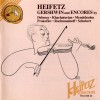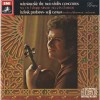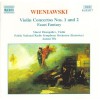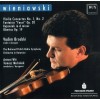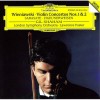| Country: | Poland |
| Period: | Romantique |
Biography
Henryk Wieniawski (10 July 1835 – 31 March 1880) was a Polish violinist and composer.
Henryk Wieniawski was born in Lublin, Congress Poland, Russian Empire. His father, Tobiasz Pietruszka, had converted to Catholicism. His talent for playing the violin was recognized early, and in 1843 he entered the Paris Conservatoire. After graduation, Wieniawski toured extensively and gave many recitals, where he was often accompanied by his brother Józef on piano. In 1847, Henryk Wieniawski published his first opus, a Grand Caprice Fantastique, the start of a modest but important catalog of 24 opus numbers.
When his engagement to Isabella Hampton was opposed by her parents, Wieniawski wrote Légende, Op. 17; this work helped the parents change their mind, and the couple married in 1860.
At the invitation of Anton Rubinstein, Wieniawski moved to St. Petersburg, where he lived from 1860 to 1872, taught many violin students, and lead the Russian Musical Society's orchestra and string quartet. From 1872 to 1874, Wieniawski toured the United States with Rubinstein. Wieniawski replaced Henri Vieuxtemps as violin professor at the Conservatoire Royal de Bruxelles in 1875.
During his residence in Brussels, Wieniawski's health declined, and he often had to stop in the middle of concerts. He started a tour of Russia in 1879 but was unable to complete it. He was taken to a hospital in Odessa after a concert. On 14 February 1880, Tchaikovsky's patroness Nadezhda von Meck took him into her home and provided him with medical attention. His friends also arranged a benefit concert to help provide for his family. He died in Moscow a few weeks later from a heart attack and was interred in the Powązki Cemetery in Warsaw.
His daughter Régine Wieniawski, born in Brussels the year before his death, also became a composer. She published her early works as "Irène Wieniawska," but after marrying Sir Aubrey Dean Paul and becoming a British subject, she used the pseudonym "Poldowski."
Wieniawski was a player in the Beethoven Quartet Society in London where he also performed on viola.
Henryk Wieniawski was considered a violinist of genius and wrote some of the most important works in the violin repertoire, including two extremely difficult violin concertos, the second of which (in D minor, 1862) is more often performed than the first (in F♯ minor, 1853). His "L'Ecole Moderne, 10 Etudes-Caprices" is a very well known and required work for aspiring violinists. His Scherzo-Tarantelle, Op. 16 and Légende, Op. 17 are also frequently performed works. He also wrote two popular mazurkas for solo violin and piano accompaniment (the second one, Obertas, in G Major), using techniques such as left-hand pizzicato, harmonics, large leaps, and many double stops. Wieniawski has been given a number of posthumous honors. His portrait appeared on a postage stamp of Poland in 1952 and again in 1957. A 100 Złoty coin was issued in 1979 bearing his image.
What is sometimes called the "Russian bow grip" ought to be called the "Wieniawski bow grip": Wieniawski taught his students his own kind of very stiff bowing that allowed him to play a "devil's staccato" with ease. This "devil's staccato" was easily used to discipline students.
The first violin competition named after Wieniawski took place in Warsaw in 1935. Ginette Neveu took first prize, David Oistrakh second, and Henri Temianka third. The International Henryk Wieniawski Violin Competition has been held every five years since 1952.





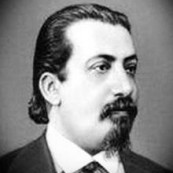

![Russian legends - David Oistrakh [20 CD]](http://static.classicalm.com/repository/collection-cover/small/267-img1318418713553266.jpg)
![Russian legends - Leonid Kogan [10 CD]](http://static.classicalm.com/repository/collection-cover/small/269-img1318707830156876.jpg)


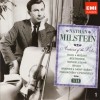
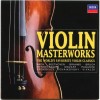
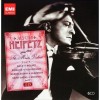
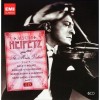
![Arthur Grumiaux - Philips Recordings 1955-1978 [CD 6 of 6]](http://static.classicalm.com/repository/disk-cover/small/3382-img1392037041781585.jpg)
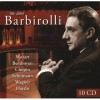

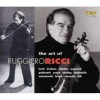
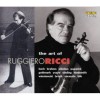
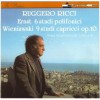

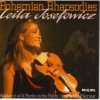
![Oskar Sala - Der Trautonium - Spieler Oskar Sala [CD1of2]](http://static.classicalm.com/repository/disk-cover/small/3696-img1406987084879276.jpg)

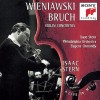


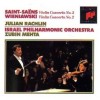

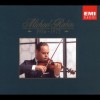
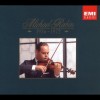
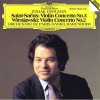
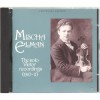

![The Heifetz Collection, Volume 8 [2 CD]](http://static.classicalm.com/repository/disk-cover/small/929-img1316982090166364.jpg)

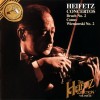
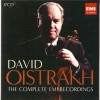
![The Heifetz Collection, Volume 1 [3 CD ]](http://static.classicalm.com/repository/disk-cover/small/715-img1315088819334029.jpg)
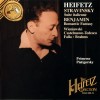
![The Heifetz Collection, Volume 2 [3 CD]](http://static.classicalm.com/repository/disk-cover/small/717-img1315129517717299.jpg)
![The Heifetz Collection, Volume 3 [2 CD]](http://static.classicalm.com/repository/disk-cover/small/719-img1315174118757085.jpg)

